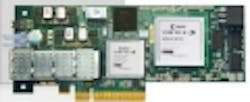Waveform analyzers must closely match specific test and measurement needs of aerospace and defense applications
When considering test and measurement equipment, not all waveform analyzers are the same, and so professionals should carefully consider the specifications and capabilities of the models available and weigh them against the specific needs of their military and aerospace application.
First, it is important to understand the relationship between the waveform to be analyzed and the specifications of the equipment performing the signal analysis, explains Darren McCarthy, RF technical marketing manager at Tektronix in Beaverton, Ore. The most common method of analyzing modern waveforms is the use of vector signal analyzers, or fast Fourier transform (FFT)-based analysis techniques. âIt is important that all the waveform information is captured within the communication channel for a finite period of time; however, most dynamic range specifications on spectrum analyzers are represented by swept analysis techniques and have no correlation to the vector analysis applications,â McCarthy describes.
The systemâs ability to capture and analyze not only repetitive signals, but also intermittent or time-varying signals is another major consideration when selecting the optimal waveform analyzer. âThe true power of a waveform analyzer comes with its ability to not only analyze what signal(s) is supposed to be present, but to also analyze the signals that are not supposed to be there,â says Sue Guzman, Aeroflex Cupertino general manager and vice president of Aeroflex Test Solutions in Cupertino, Calif. âCritical to this ability is the need for simultaneously displaying the captured waveform in all 3 domains: time, frequency, and modulation.â
When selecting a signal analyzer to evaluate waveforms, consider RF frequency, information or acquisition bandwidth, and signal fidelity (dynamic range) within the acquisition bandwidth and at the frequency of interest, McCarthy advises. âYou need to be able to tune to the frequency of interest,â he says. Information bandwidth, on the other hand, relates to the instantaneous FFT bandwidth that can be continually processed for analysis. âIf your waveform hops over multiple channels, and you are interested in the analysis of the waveform during the hopping transitions, your information bandwidth of your signal analyzer must be able to seamlessly capture the entire hopping transitions over multiple channels.â
Todayâs technologies provide a much more capable platform for waveform analyzers, including wider instantaneous bandwidths, much higher speed, much deeper signal memory, and many more software analysis features that at one time only were available as post-processing capabilities on computers separate from the waveform analyzer itself,â Guzman admits. âThe instantaneous bandwidth available determines the fastest pulses that can be analyzed or determines the widest frequency signal which can be measured,â she describes.
The system should offer modularity, enabling upgrades as better performing analog-to-digital converters (A/D converters) and faster processors become available, without causing the user to purchase an entirely new system each time, Guzman adds. The breadth of analysis capability present in the software/firmware of the system, especially the variety of data visualization options and the number of different demodulation types supported, is key, she says.
âSoftware option flexibility enables the analyzer to be used for multiple purposes: phase noise testing, signal source tester, peak/channel power meter, modulation analyzer, oscilloscopes, and frequency counter,â McCarthy explains, describing the new Tektronix RSA6120A. As a result, such systemsâcapable of many different automated scalar and vector pulse analysis parameters, for exampleâcan replace several instruments usually required for accurate pulse performance characterization.
In short, says McCarthy, the measurement utility and performance can give you the confidence you need to design the most advanced radio and radar applications. âRead the specifications, and ask how they apply to your waveform analysis needs,â he recommends.
When choosing a waveform analyzer, do not lock yourself into a corner, Guzman cautions. âSelect one that has the hardware modularity to adapt to newer A/D converter and processing capability, and one that has the software/firmware architecture that allows the system to easily add new demodulation or analysis functions. You need to invest in a test solution that can grow with you, not one that traps you in the past.â
Company Information
Aeroflex Inc., Plainview, N.Y., 516-694-6700, www.aeroflex.com
Agilent Technologies Inc., Santa Clara, Calif., 408-345-8886, www.agilent.com
Anritsu Company, Morgan Hill, Calif., 408-778-2000, www.us.anritsu.com
Keithley Instruments Inc., Cleveland, Ohio, 440-248-0400, www.keithley.com
LeCroy Corp., Chestnut Ridge, N.Y., 845-425-2000, www.lecroy.com
National Instruments Corp., Austin, Texas, 800-531-5066, www.ni.com
Rohde & Schwarz North America, Irvine, Calif., 949-885-7000, www.rohde-schwarz.com/USA
Tektronix Inc., Beaverton, Ore., 800-833-9200, www.tek.com


